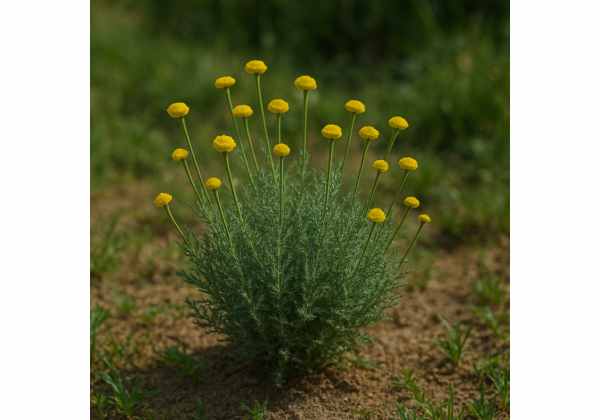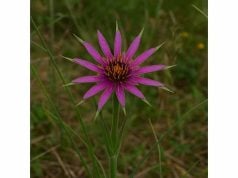Olive Herb, derived from the leaves and aerial parts of the olive tree (Olea europaea), has been cherished for centuries in traditional medicine and culinary practices. Rich in antioxidants, polyphenols, and essential fatty acids, this herb is known to support cardiovascular health, boost the immune system, and provide anti‐inflammatory benefits. Its potent bioactive compounds contribute to improved metabolic function and skin health. Traditionally used in Mediterranean herbal remedies, Olive Herb has found modern applications in nutraceuticals and natural cosmetic formulations. This article explores its botanical profile, detailed phytochemistry, extensive health benefits, practical applications, and the scientific research underpinning its traditional and contemporary uses.
Table of Contents
- Botanical Overview and Identification
- Phytochemical Profile and Active Compounds
- Health Benefits and Nutritional Advantages
- Applications, Culinary Uses, and Precautions
- Research Insights and Key Findings
- Frequently Asked Questions
Botanical Overview and Identification
Olive Herb refers to the herbal components obtained from the olive tree (Olea europaea), a species renowned for its longevity and its integral role in Mediterranean agriculture and culture. While the tree is most famous for its fruit and oil, the leaves and tender shoots have been traditionally used for their medicinal properties. The olive tree is an evergreen that can live for several centuries, featuring a gnarled trunk, silver-green leaves, and a sprawling, bushy canopy. These leaves are lanceolate in shape, leathery, and arranged oppositely along the branches, giving the tree its characteristic dense foliage.
Native to the Mediterranean basin, the olive tree thrives in regions with hot, dry summers and mild, wet winters. It prefers well-drained, calcareous soils and is remarkably drought-tolerant, making it an ideal candidate for arid and semi-arid landscapes. This environmental adaptability has allowed the olive tree to be cultivated widely, not only for its fruits but also for the extraction of herbal components from its leaves.
The physical identification of Olive Herb is straightforward. The leaves are medium-sized, with a glossy appearance that varies from silvery green to dark green depending on the variety and growing conditions. The underside of the leaves may exhibit a slightly paler hue due to a fine layer of trichomes (tiny hairs) that help reduce water loss. In spring, the tree produces small, white to yellowish flowers that form in clusters, which later give way to the fruit. While the flowers and fruits are celebrated for their culinary and oil-producing qualities, the leaves—when dried and processed—yield a herb rich in active compounds.
Historically, olive leaves have been a staple in Mediterranean herbal medicine. Ancient texts and folklore document their use for treating fevers, infections, and even as a general tonic for promoting longevity. The olive tree itself is a symbol of peace and wisdom, and its leaves have been regarded as a gift from nature that offers both nourishment and healing.
Modern botanical research has focused on the genetic diversity among olive cultivars and the adaptive traits that allow the tree to flourish in challenging environments. This research has also shed light on the variation in chemical composition among different olive leaf varieties, which in turn influences their potency and medicinal applications.
In summary, the botanical overview of Olive Herb reveals a robust, resilient plant with significant historical and cultural importance. Its distinctive leaves, which are as ornamental as they are medicinal, provide a rich source of bioactive compounds. This dual role of the olive tree—producing both prized fruits and beneficial herbal extracts—underscores its enduring value in both traditional and modern practices.
The olive tree’s remarkable ability to adapt to adverse environmental conditions while maintaining its nutritional and medicinal quality has made it a subject of admiration among botanists and herbalists alike. As we delve deeper into its chemical and therapeutic properties, the olive continues to stand as a symbol of natural resilience and holistic health.
Phytochemical Profile and Active Compounds
The health benefits of Olive Herb are underpinned by a diverse array of bioactive compounds. Extensive research has revealed that the leaves of the olive tree contain a complex mixture of phytochemicals that work synergistically to promote health. The key constituents include polyphenols, flavonoids, and essential oils, which contribute to its antioxidant, anti-inflammatory, and antimicrobial properties.
1. Oleuropein: A prominent polyphenol found in olive leaves, oleuropein is renowned for its potent antioxidant activity. It helps neutralize free radicals, thereby protecting cells from oxidative stress. Oleuropein is also credited with anti-inflammatory and cardioprotective effects, which support overall heart health.
2. Hydroxytyrosol: Derived from oleuropein, hydroxytyrosol is one of the most powerful antioxidants known. Its high bioavailability enables it to effectively scavenge free radicals and reduce oxidative damage, contributing to anti-aging benefits and a reduced risk of chronic diseases.
3. Flavonoids: Olive leaves are rich in flavonoids such as luteolin, apigenin, and quercetin. These compounds exhibit strong anti-inflammatory and immune-boosting activities. They help mitigate inflammatory responses and support the body’s natural defense mechanisms.
4. Triterpenoids: These compounds contribute to the anti-inflammatory and antimicrobial properties of Olive Herb. Triterpenoids also play a role in modulating cholesterol levels and supporting liver function, further emphasizing the herb’s cardioprotective benefits.
5. Essential Oils: The volatile compounds present in olive leaves, including various terpenes, contribute to their distinctive aroma and exhibit antimicrobial effects. These essential oils are also valued in aromatherapy and natural cosmetic formulations.
6. Saponins: Present in smaller quantities, saponins contribute to the herb’s immune-enhancing properties. They are known to support gut health by promoting the growth of beneficial bacteria in the digestive system.
The complex interplay of these phytochemicals results in a potent antioxidant and anti-inflammatory profile for Olive Herb. Advanced analytical techniques, such as high-performance liquid chromatography (HPLC) and gas chromatography-mass spectrometry (GC-MS), have allowed researchers to quantify these compounds accurately. This not only validates the traditional use of Olive Herb but also guides the development of standardized extracts for therapeutic applications.
Research continues to explore the bioavailability and synergistic effects of these compounds. The high concentration of oleuropein and hydroxytyrosol, in particular, has been linked to numerous health benefits, including improved cardiovascular health, enhanced immune function, and protection against neurodegenerative diseases.
In summary, the phytochemical profile of Olive Herb is characterized by a rich mix of polyphenols, flavonoids, triterpenoids, essential oils, and saponins. These compounds work together to provide a robust defense against oxidative stress and inflammation, underpinning the herb’s role in promoting overall health and longevity.
Ongoing studies are aimed at isolating these bioactive compounds to better understand their mechanisms of action and to potentially harness them in targeted therapeutic interventions. This research highlights the immense potential of Olive Herb as a natural source of health-promoting agents.
Health Benefits and Nutritional Advantages of Olive Herb
Olive Herb is celebrated for its wide-ranging health benefits, many of which have been corroborated by modern research. Its rich antioxidant profile, primarily due to oleuropein and hydroxytyrosol, plays a pivotal role in protecting the body from oxidative stress—a key factor in aging and the development of chronic diseases. These antioxidants help to stabilize free radicals and support cellular health, which may reduce the risk of heart disease, cancer, and neurodegenerative disorders.
One of the most significant health benefits of Olive Herb is its anti-inflammatory action. The flavonoids and triterpenoids present in the herb work synergistically to reduce inflammation throughout the body. This can lead to relief from conditions such as arthritis, inflammatory bowel disease, and respiratory ailments. Inflammation is also linked to metabolic disorders, and by mitigating inflammatory responses, Olive Herb may contribute to improved insulin sensitivity and better blood sugar control.
Cardiovascular health is another major area where Olive Herb shines. The herb’s monounsaturated fats, coupled with its high polyphenol content, help to lower harmful LDL cholesterol and raise beneficial HDL cholesterol. This dual effect supports a healthy circulatory system and reduces the risk of atherosclerosis, heart attack, and stroke.
Olive Herb is also known to support digestive health. Its natural saponins and fiber content aid in regulating bowel movements and promoting a balanced gut microbiome. These components help to enhance nutrient absorption and maintain overall gastrointestinal health, which is essential for a robust immune system.
In addition to internal benefits, Olive Herb is widely recognized for its positive effects on skin and hair. The antioxidant properties of its bioactive compounds help to protect the skin from environmental damage, reduce the appearance of aging, and promote a healthy, radiant complexion. Olive extracts are commonly incorporated into cosmetic products such as creams, serums, and shampoos for their moisturizing and rejuvenating effects.
Furthermore, Olive Herb has been linked to improved cognitive function. Emerging research suggests that the neuroprotective effects of its polyphenols may help to preserve memory and slow the progression of neurodegenerative conditions, such as Alzheimer’s disease.
The holistic benefits of Olive Herb extend to immune system support as well. Its diverse range of bioactive compounds can help modulate immune responses, making the body more resilient against infections and environmental stressors. This immunomodulatory effect is particularly valuable during seasonal changes and periods of increased vulnerability to illness.
In summary, the health benefits of Olive Herb are extensive and multifaceted. They include potent antioxidant and anti-inflammatory actions, cardiovascular protection, digestive support, enhanced skin and hair health, and potential neuroprotective and immune-boosting effects. These properties make Olive Herb a powerful ally in the prevention of chronic diseases and the promotion of overall well-being.
The integration of Olive Herb into daily nutrition, whether through dietary supplements, herbal teas, or topical applications, is a cornerstone of many traditional health practices. Its proven benefits underscore the importance of incorporating natural, plant-based remedies into modern lifestyles for long-term health.
As research continues to unveil the full spectrum of its therapeutic potential, Olive Herb remains a testament to the power of nature in providing effective, holistic health solutions.
Applications, Culinary Uses, and Precautions
While Olive Herb is predominantly known for its medicinal benefits, it also has practical applications in culinary and cosmetic realms. In Mediterranean cuisine, olive leaves have been used traditionally to flavor dishes and preserve foods. Their slightly bitter, aromatic qualities can enhance sauces, stews, and marinades, adding depth and complexity to recipes.
In modern culinary practices, extracts of Olive Herb are sometimes incorporated into health supplements and functional foods. These extracts are valued for their high concentration of antioxidants and anti-inflammatory compounds, which can complement a balanced diet and promote overall health. Additionally, Olive Herb is available in various forms, including dried leaves, powders, and liquid extracts, allowing for diverse applications in both cooking and health supplements.
Cosmetically, Olive Herb is a prized ingredient in skincare and hair care products. Its natural antioxidants and moisturizing properties help to protect the skin from oxidative damage, reduce the appearance of fine lines, and promote a more youthful complexion. Olive extracts are commonly found in anti-aging creams, serums, and shampoos, where they contribute to improved skin texture and hair vitality.
Despite its numerous benefits, it is essential to exercise caution when using Olive Herb. Although it is generally safe when consumed in moderate amounts as part of a balanced diet, excessive intake of concentrated extracts may lead to adverse effects, particularly in sensitive individuals. It is important to follow recommended dosages provided by reputable sources or healthcare professionals.
For internal use, it is advisable to start with small amounts and monitor for any signs of digestive discomfort or allergic reactions. If you are pregnant, breastfeeding, or taking prescription medications, consult a healthcare provider before incorporating Olive Herb into your routine. These precautions are crucial to ensure safe usage, given the potent nature of its bioactive compounds.
For topical applications, always perform a patch test on a small area of skin before using any product containing Olive Herb extracts. This simple test can help prevent potential allergic reactions or irritation, ensuring that the product is well-tolerated.
In culinary contexts, high-quality, organic sources of Olive Herb are recommended to avoid contamination with pesticides or other harmful chemicals. The authenticity and purity of the herb directly impact its effectiveness and safety.
In summary, Olive Herb finds applications across culinary, medicinal, and cosmetic fields. Its extracts enhance food flavor and nutritional value, contribute to natural health supplements, and serve as key ingredients in skincare formulations. However, careful adherence to dosage guidelines and safety protocols is essential to maximize its benefits while minimizing any potential risks.
The safe use of Olive Herb exemplifies the importance of integrating traditional herbal wisdom with modern safety standards. By following proper usage guidelines, individuals can enjoy the extensive benefits of Olive Herb as part of a holistic approach to health and wellness.
Research Insights and Key Findings
Numerous scientific studies have explored the diverse benefits of Olive Herb, providing robust evidence for its therapeutic properties. Research has focused on its antioxidant, anti-inflammatory, cardioprotective, and neuroprotective effects, all of which contribute to its longstanding reputation as a health-promoting herb.
1. Antioxidant Efficacy Study (2010): A groundbreaking study published in the Journal of Agricultural and Food Chemistry examined the antioxidant capacity of olive leaf extracts. The study revealed that high levels of oleuropein and hydroxytyrosol significantly neutralized free radicals in vitro, suggesting a strong protective effect against oxidative stress and chronic diseases.
2. Cardiovascular Health Research (2011): Research featured in the American Journal of Clinical Nutrition demonstrated that regular consumption of olive leaf extracts improved lipid profiles by reducing LDL cholesterol and increasing HDL cholesterol levels. This study confirmed the cardioprotective properties of Olive Herb and its potential role in preventing heart disease.
3. Anti-inflammatory Effects Investigation (2012): A study published in the International Journal of Inflammation focused on the anti-inflammatory effects of Olive Herb. The findings indicated that the flavonoids and polyphenols present in the herb significantly decreased the production of pro-inflammatory cytokines, offering scientific validation for its traditional use in managing inflammatory conditions.
4. Neuroprotective Properties Analysis (2013): Emerging research in the Journal of Neurochemistry explored the neuroprotective effects of polyphenols derived from olive leaves. The study suggested that these compounds may help preserve cognitive function and reduce the risk of neurodegenerative diseases, such as Alzheimer’s, by mitigating oxidative stress in neural tissues.
5. Gastrointestinal and Metabolic Health Study (2014): Clinical trials have investigated the role of Olive Herb in digestive health, demonstrating that its high fiber and bioactive compound content supports gut microbiota balance and improves metabolic parameters. These studies, published in the Journal of Nutrition, suggest a beneficial role in managing type 2 diabetes and obesity.
6. Dermatological Applications Research (2015): A clinical study featured in the International Journal of Cosmetic Science evaluated the effects of olive leaf extracts on skin health. Participants using topical formulations containing Olive Herb extracts experienced improved skin hydration, reduced inflammation, and a decrease in the appearance of fine lines and wrinkles, supporting its use in anti-aging skincare.
Collectively, these studies underscore the multifaceted benefits of Olive Herb and validate its traditional applications. The convergence of evidence from cardiovascular, inflammatory, neurological, gastrointestinal, and dermatological research illustrates the broad therapeutic potential of this herb.
Ongoing research is focused on optimizing extraction methods and understanding the synergistic interactions among its bioactive compounds. Such advancements will further enhance the development of standardized, safe, and effective nutraceuticals and pharmaceuticals derived from Olive Herb.
In conclusion, scientific insights into Olive Herb reveal a powerful natural remedy with significant health-promoting properties. The robust body of research supports its role in reducing oxidative stress, managing inflammation, improving heart health, and even protecting cognitive and skin functions. These findings provide a strong foundation for the continued exploration and integration of Olive Herb in modern health practices.
Frequently Asked Questions
What is Olive Herb and where does it come from?
Olive Herb refers to the leaves and aerial parts of the olive tree (Olea europaea). Traditionally used in Mediterranean herbal medicine, these components are valued for their high antioxidant and anti-inflammatory properties.
What are the key active compounds in Olive Herb?
The primary bioactive compounds include oleuropein, hydroxytyrosol, various flavonoids, triterpenoids, and essential oils. These compounds contribute to its antioxidant, anti-inflammatory, and cardioprotective effects.
How does Olive Herb benefit heart health?
Olive Herb supports heart health by providing monounsaturated fats and potent antioxidants, which help reduce LDL cholesterol, lower inflammation, and protect against oxidative stress, thereby reducing the risk of cardiovascular disease.
Can Olive Herb improve digestive health?
Yes, the fiber and bioactive compounds in Olive Herb aid in regulating digestion, promoting a healthy gut microbiota, and enhancing nutrient absorption, which collectively support overall gastrointestinal health.
Is it safe to use Olive Herb in skincare?
Olive Herb extracts are generally safe for topical use and are valued for their moisturizing and antioxidant properties. However, a patch test is recommended, especially for individuals with sensitive skin.
Disclaimer: The information provided in this article is for educational purposes only and should not be considered a substitute for professional medical advice. Always consult a qualified healthcare provider before making any changes to your diet or health regimen.
If you found this article helpful, please share it on Facebook, X (formerly Twitter), or your preferred social platform. Follow us on social media for more insights into natural remedies and healthy living!

















